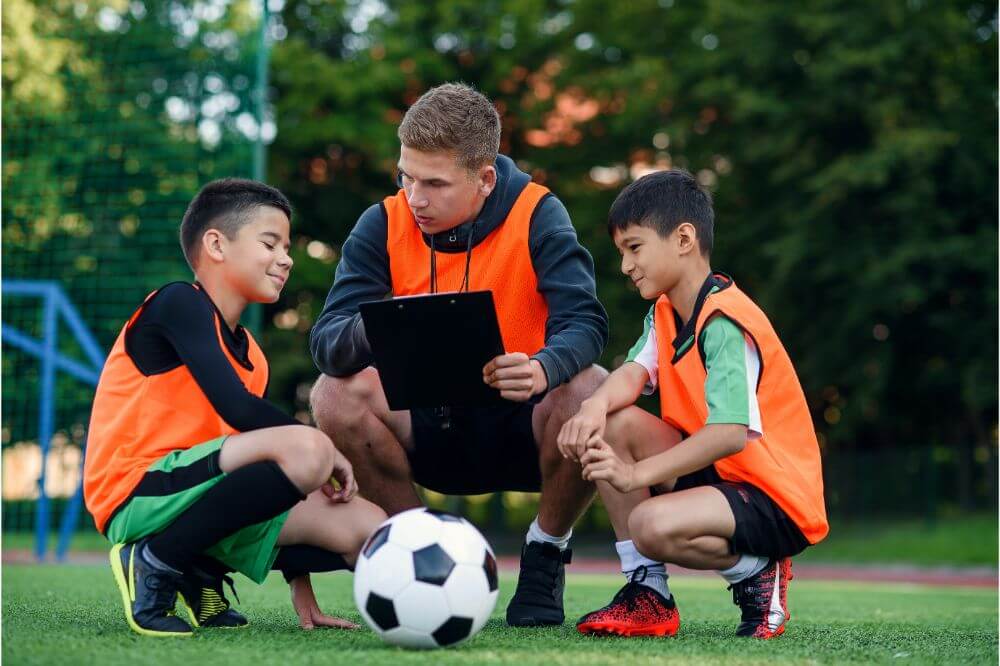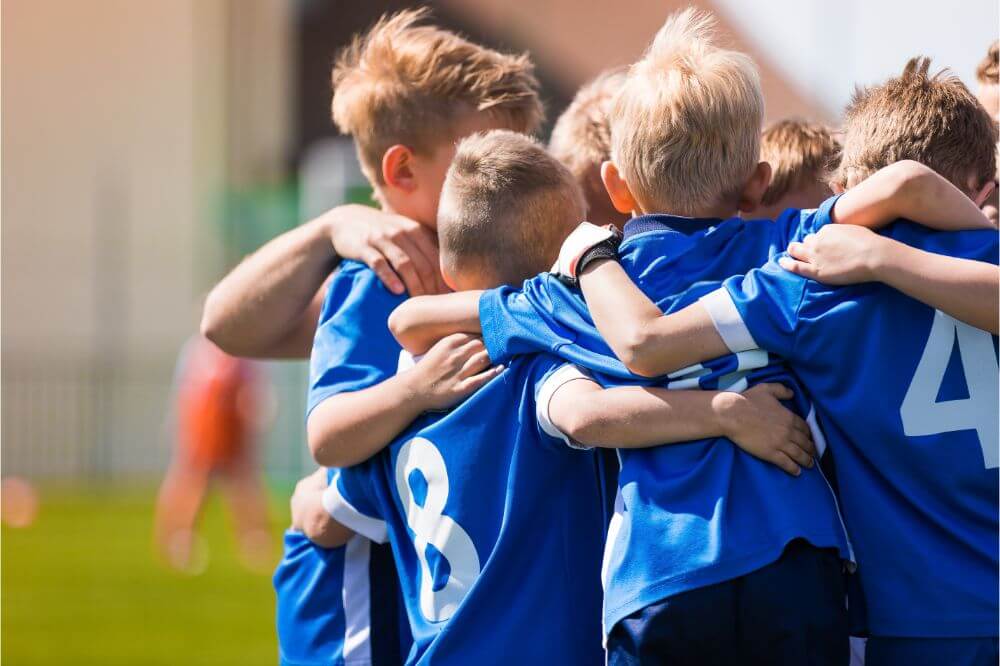There are many youth soccer organizations throughout the United States that want to contribute to the soccer player development of young players. The issue that comes up is when trying to identify coaches for these u5 soccer teams. 99.9% of the time, a parent volunteer is thrown into this role because they want to help their son or daughter.
These small soccer organizations are non-profit the majority of the time and have very few resources to pay a professional or trained coach. This is not a very big problem when dealing with U5 soccer teams or U6 teams. The biggest problem facing these clubs is that parents think that a 45 minute training is sufficient for kids to improve.
The other issue is that parents think that if a U5 soccer team or player doesn’t have a professional coach, they are not going to make it.
The quicker a parent accepts and understands that soccer player development is a process that takes over 10,000 hours, the better off that child will be. At early ages, from 2, 3, 4, or 5 years old, the children need to “play” with the ball. Not necessarily play a structured game of soccer, but just play with the ball.
For example, It’s ok if a 2 year old picks up the ball with their hand, they are trying to get a feel for it. The plan is to help each child fall in love with the ball and WANT to play with it. If they ask to kick the ball with them, as a parent, go do it. You don’t need to hire a personal trainer or soccer coach for this, just go out and kick the ball with them.
If they want you to play Goalie, be the best, weirdest, coolest, goalie of all time. Just make the child connect kicking a ball with fun. This is called “PAIRING” in behavior analysis and it basically means that the child has paired fun with the environment you create.

Once the child or u5 soccer team have paired kicking the ball around with having fun, with you (or friends), then you have established Pairing. This now means that the child will be reinforced (or enjoy) by playing soccer. This achievement will bring about many other reinforcers to the development of the child. But for now the most important thing is that your child now loves soccer and WANTS to play.
If your child is under 5 years old, there is no need for long hours of structured play, just plain backyard kicking the ball around is perfectly fine. Once they do join a structured team or league, there is no need to obsess over the structure. For example there is no need to complain that the coach “doesn’t know what he’s doing” because he doesn’t have any good drills.
The best thing you can do is to keep the child engaged in playing in a game that is somewhat related to soccer. So if they are kicking, punting, dribbling, or juggling the ball, that is good enough for that age, as long as they are having fun.
What Drills for U5 Soccer Team
I recommend that you have a few drills with one ball per child when coaching a young u5 soccer team. You can make it up as you go or just search for dribbling soccer games in youtube, but don’t overcomplicate it. You can have all the kids dribble to the moon and back, dribble between cones, under or around parents, with cones on their heads, through the goals, or just to the line and back.
U5 Soccer Team Technical Factors
The most technical aspect to focus on here is the ball and the player. Each player should make an attempt to keep the ball as close to them as possible. That’s all you have to worry about! But too many parents and coaches will spend HOURS talking to a 5 year old soccer player about forwards and midfielders and making runs and clearing the ball, etc. That is completely unnecessary since the child still has to learn how to dribble before any of that even makes sense.
So don’t waste your time with downloading passing and shooting drills for U5 soccer teams or U6 players. None of that matter until a child can learn how to dribble. This will take time, so be ready to spend the next 3-4 years. Remember this is a process and there is no single drill or coach that can teach a 4-5 year old soccer player how to dribble in one day.
• The keys to remember about coaching U5 soccer teams or U6 players is that they are all selfish, so they want the ball, ALL the time! That’s why you are not going to teach them to pass right now, they don’t want to do it and they don’t want to learn.
• Parents and coaches should focus on Pairing. Make sure the kids are associating soccer with fun. To do this you must pair soccer with fun. Anytime they are at the soccer field or playing with a ball, it should be fun. So if the child doesn’t want to play, don’t make them because that’s not fun. You need to go back to square one. The child should be asking you to play, not you asking the child to go play.
• You don’t have to teach them everything today. In the next 3-4 years, they will learn to dribble, pass, receive, shoot, and LOVE the game.
• The kids should be playing at home and outside of FORMAL training. So don’t expect players to reach their max potential if they are not playing outside of formal training hours. The child must love soccer so much that they ask you to play, they ask their friends to play, and they enjoy playing with anyone.
• Remember that as a coach, even if you have no clue about coaching, as long as they kids continue to love soccer after the season and want more, you have done your job. Because it means that they will continue getting better in the next 15 Years!!! That’s how important those first years are. They must establish Soccer/Football as a game that they love to play.
“Pairing” – The process of creating (or re-creating) an enjoyable, reinforcing, and pleasurable relationship between therapist and child, where the child comes to view the therapist as not just the giver of reinforcement, but as actual reinforcement. (www.IloveAba.com)
